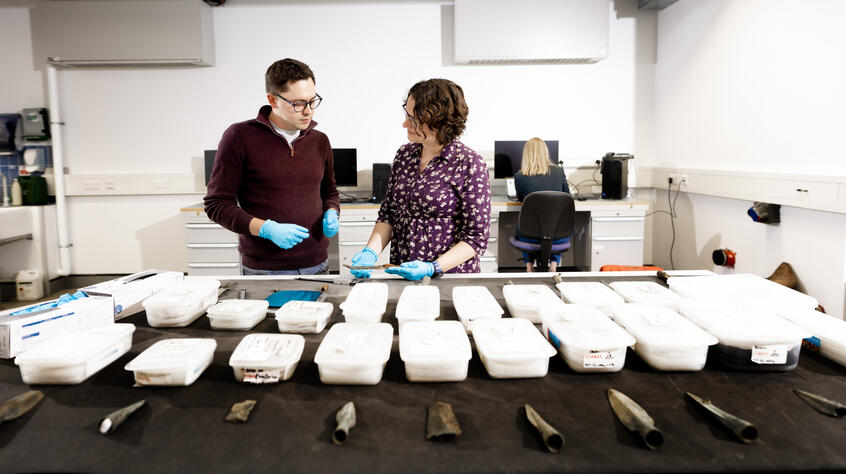Archaeology and Ancient History
Archaeological Computation and Artefact Analysis Laboratory

The Archaeological Computation and Artefact Analysis laboratory is a critical space in the laboratory suite of the School of Heritage and Culture offering University of Leicester staff and students significant space to lay out and study assemblages of materials, as well 3D scanning and computational facilities.
At the heart of this lab, dedicated space allows researchers to set out materials that we are studying, often on loan from collections around the UK or from across the world. On dedicated benches teams from the University of Leicester can look at artefacts from medieval ceramic assemblages to Bronze Age hoards collectively to begin the process of understanding them before they go for analysis under our microscopes. This also provides space for discussions and workshops centred on artefacts.
In addition, the lab is home to two Artec Space Spider scanners. The Space Spider is a high-resolution 3D scanner based on blue light technology, it can capture small objects or intricate details of large objects in high resolution. The scanner is able to render complex geometry and sharp edges, it is ideal for high-resolution capturing of artefacts, with the final 3D model exported to a 3D printer. These 3D models can be printed on the School of Heritage and Culture’s large format FormLabs 3L 3D Printer, allowing them to be handled and used in teaching and outreach. This technology forms part of a wider imaging capability including Reflectance Transformation Imaging and photogrammetry.
The lab also houses two high powered desktop computers dedicated for geoinformatics and post processing of data. The lab is also set up for photography, where researchers are able to perform artefact photography and photogrammetry. There is also a dedicated computer for the post processing of microscopy data and correlative workflow data.
As a key space at the heart of our facilities the lab also offers an outstanding space for everything from engaging the public on tours, via lab team meetings to teaching our undergraduates students.